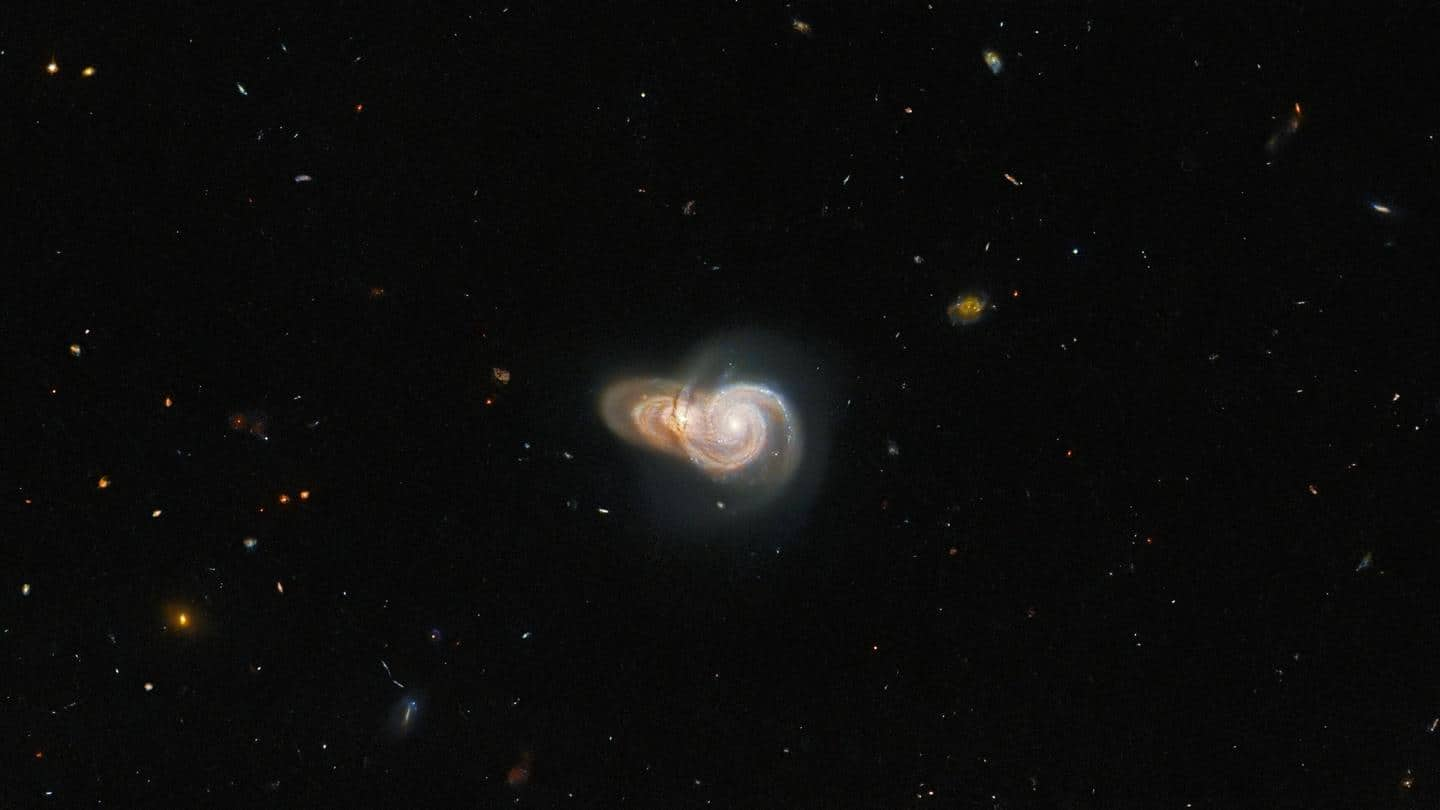
Hubble captures stunning image of overlapping galaxies: Is it real?
What's the story
Galaxies colliding in space is nothing out of the ordinary. The Hubble Space Telescope has captured many interacting galaxies over the years.
However, the famed telescope recently came across something more interesting: two galaxies that appear to be interacting with each other but aren't doing so.
The European Space Agency (ESA) has also confirmed the two "overlapping" galaxies are nothing but an optical illusion.
Context
Why does this story matter?
These days, more often than not, we wake up to a new discovery by the James Webb Space Telescope. But before James Webb, it was Hubble.
Since it was launched in 1990, Hubble has taught us more about the universe than we ever knew. At times, however, Hubble indulges in some inconsequential imagery for fun.
The image of overlapping galaxies is something like that.
Galaxies
The closer galaxy has outstretched spiral arms
The two galaxies involved in the picture captured by the Hubble Space Telescope are SDSS J115331 and LEDA 2073461. They are more than one billion light years away from Earth.
In the image, the closer galaxy seems to have a white-colored interior with stretched-out spiral arms on either side.
The other galaxy is mostly orange in color with rusty hues.
Illusion
Are the galaxies really colliding?
From the image captured by Hubble, it looks like the two galaxies are overlapping. However, both NASA and ESA have confirmed that's not the case.
NASA called it "missed connections" in its Instagram post. Moreover, the two galaxies are far too neat to be involved in a collision.
What appeared to be a collision is simply nothing but an optical illusion.
The image
The image is part of Galaxy Zoo project
The image is part of observations from the Galaxy Zoo project. It is a citizen science project established in 2007 that crowdsources galaxy classifications.
The volunteers who are part of this project classify galaxies imaged by telescopes.
The list of targets Galaxy Zoo chooses to observe is chosen by public vote, true to the project's crowdsourced roots.